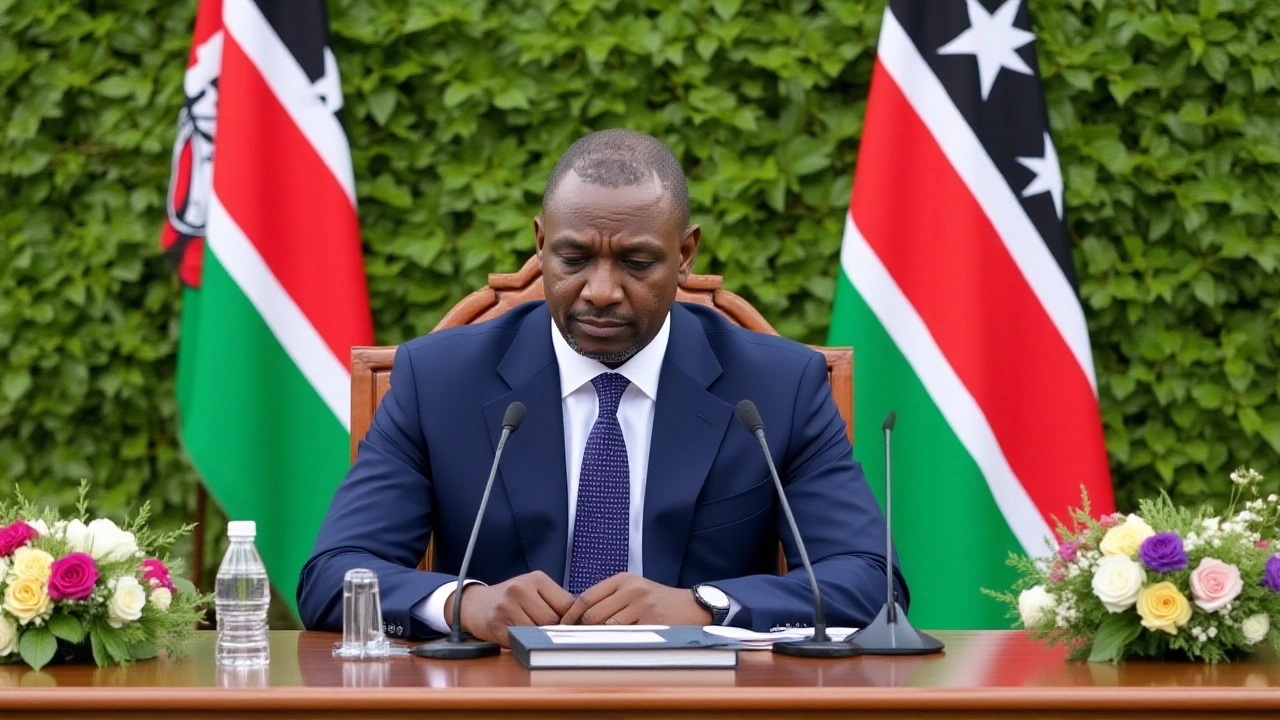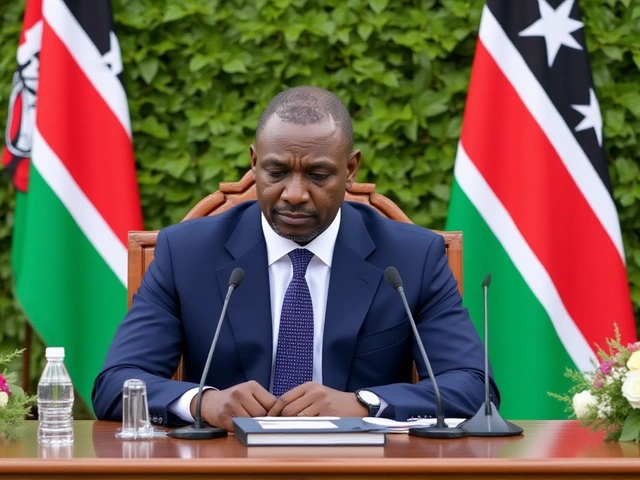When William Ruto, President of Kenya declared the NYOTA Project a national priority on Madaraka Day 2025, the country’s 47 counties were set to receive a KSh20 billion boost aimed at reshaping the lives of more than 820,000 vulnerable young people.
The rollout, announced alongside World Bank funding, is anchored in four pillars – employability, entrepreneurship, savings, and institutional support – and will stretch over five years. The first cohort alone targets approximately 70 youngsters per ward, meaning every local administrative unit will feel the impact.
What NYOTA Looks Like on the Ground
NYOTA (National Youth Opportunities Towards Advancement) is not just another grant scheme. It intertwines apprenticeship slots with Recognition of Prior Learning (RPL) so that a teen who’s already fixing roofs can earn a formal certificate. The entrepreneurship pillar hands out KSh50,000 seed grants, coupled with mentorship from seasoned business owners.
In addition, the program’s savings component rides on the National Social Security Fund’s Haba Haba scheme, encouraging beneficiaries to set aside a portion of earnings each month. Finally, the institutional support pillar stitches together agencies like the Micro and Small Enterprises Authority, National Employment Authority and National Industrial Training Authority to keep the machinery humming.
Key Players Steering the Initiative
Day‑to‑day execution falls to Augustine Mayabi, National Project Manager for NYOTA. He told reporters that the program will span all 1,450 wards, with Bungoma County earmarked for 3,150 first‑round beneficiaries – a micro‑cosm of the national ambition.
Leadership from the cabinet sharpened the plan in early August. Alfred Mutua, Cabinet Secretary for Labour and Social Protection emphasized the need for "whole‑of‑government" coordination. Treasury chief Wycliffe Oparanya confirmed the KSh20 billion budget aligns with the Bottom‑Up Economic Transformation Agenda (BETA). Youth Affairs boss Salim Mvurya highlighted the program’s digital empowerment track, which will train youth on accessing government procurement opportunities.
Numbers That Tell the Story
- Target beneficiaries: 820,000 youths (18‑29, up to 35 for persons with disabilities)
- Applications received for entrepreneurship track: >1 million since 11 July 2025
- Grants to be awarded: KSh50,000 each, up to 70 per ward
- Technical and Vocational Education and Training (TVET) slots: 90,000
- RPL certifications planned: 20,000‑30,000
- Training on Access to Government Procurement Opportunities: 600,000
Voices from Nairobi to the Counties
During the launch, President Ruto told a crowd in Nairobi, "We are being deliberate about doing something about employment, empowerment and engagement with young people." He urged MPs and county officials to embed youth considerations in every development plan.
Alfred Mutua added, "Together with my colleagues, we fine‑tuned plans for NYOTA—an initiative that promises to change the future for many Kenyan youths." Meanwhile, a teenager from Machakos who submitted an application said, "I never imagined a grant could be this close; it feels like a lifeline."

Why NYOTA Matters Beyond the Numbers
Unemployment among Kenya’s youth hovers around 20 percent, with underemployment pushing many into informal work that offers little security. By tying skill development to actual market demand – especially in affordable housing and government procurement – NYOTA aims to close that gap.
Economists note that every KSh1 billion injected into youth enterprises could generate roughly KSh3 billion in economic activity, according to a 2023 World Bank report on African youth programs. If NYOTA meets its targets, the ripple effect could lift hundreds of thousands out of poverty and expand the tax base, feeding back into public services.
Looking Ahead: Milestones to Watch
The next major checkpoint is the disbursement of the first tranche of grants by the end of October 2025. Following that, quarterly reports from the implementation agencies will be published on the official NYOTA website, offering transparency on uptake, dropout rates and job placement outcomes.
Long‑term, the success of NYOTA could inform similar initiatives in neighboring East African nations, many of which face comparable youth unemployment challenges. The program’s holistic design – blending cash, training, and institutional reform – may become a template for the region.
Frequently Asked Questions
How will NYOTA select the 70 beneficiaries per ward?
Selection will be based on a points‑system that scores applicants on income level, disability status, and entrepreneurial potential. County officials will verify documents, then forward a ranked list to the national secretariat for final approval.
What kind of mentorship will grant recipients receive?
Mentors will be drawn from the Micro and Small Enterprises Authority’s network, seasoned entrepreneurs, and representatives of the private sector. Each mentee gets monthly coaching sessions, business plan reviews, and access to a digital portal for market information.
Can youths outside the formal education system apply?
Yes. The program explicitly targets form‑four leavers and those who never entered secondary school, recognizing that many young Kenyans earn a living in informal trades. Applicants simply need to prove residency and income status.
What is the expected impact on Kenya’s savings rate?
By linking the savings pillar to the Haba Haba scheme, the government hopes to lift the national savings ratio from roughly 13 percent of GDP to about 16 percent by 2030, driven by increased financial inclusion among youth.
How does NYOTA differ from previous youth programs?
Unlike past initiatives that focused mainly on cash transfers, NYOTA bundles skills training, formal certification, and pathways to government contracts. It also operates under a coordinated multi‑agency framework, which aims to reduce duplication and improve monitoring.



Look, the very notion of a top‑down grant program reveals the elite's chronic inability to trust grassroots ingenuity. It’s a paradox that the state must micromanage what it once pretended to empower. The NYOTA initiative, while glossy, will inevitably drown in bureaucratic red‑tape, because power brokers love to keep the purse strings clenched.
Don't be fooled by speeches; the real change lives in the alleyways where young Kenyans already hustle.
Really appreciate the collaborative spirit behind NYOTA. It’s encouraging to see different agencies aligning their efforts. Hope the mentorship component brings lasting confidence to the participants.
Honestly, you’d think a program this massive could have been thought up centuries ago 🤔. Yet here we are, still cheering for a grant that might never reach the ones who need it most 😒. The idea is noble but the execution? That’s the real test.
The NYOTA framework essentially repackages existing vocational schemes without adding substantive value though it claims to be revolutionary. Its pillars sound comprehensive yet they mirror what NGOs have done for years the only difference being the scale. The seed grant of KSh50,000 is modest when you consider the capital required to start a real business in Kenya especially in urban settings. Moreover the selection algorithm based on points could easily be gamed by those with better paperwork. In short the initiative is a textbook example of well‑intentioned policy hampered by implementation gaps.
From a nationalistic standpoint, the NYOTA programme epitomises Kenya’s resolve to harness its youthful demographic for economic sovereignty. The allocation of KSh20 billion demonstrates prudence and foresight, aligning perfectly with the Bottom‑Up Economic Transformation Agenda. It is imperative that such investments remain insulated from external political pressures, ensuring that the beneficiaries are truly the nation's future.